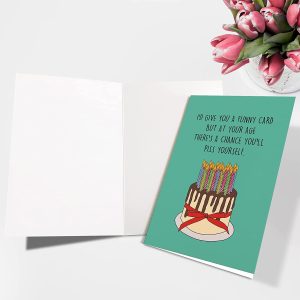Creating an effective business card involves a combination of design, content, and strategy to ensure that it serves its purpose of making a positive impact and facilitating meaningful connections. Here’s a breakdown of the key elements that contribute to the art of effective business cards:
- Clear Branding: Your business card should reflect your brand identity, including your company’s logo, color scheme, and overall design aesthetic. Consistency across all your branding materials helps reinforce your brand image.
- Simplicity: Keep the design clean and simple. Avoid cluttering the card with too much information or design elements. A minimalist approach often makes the card more visually appealing and easier to read.
- Relevant Information: Include essential information such as your name, job title, company name, phone number, email address, and physical address. Consider what information is most relevant for your industry and target audience.
- Hierarchy of Information: Arrange information in order of importance. Your name and company name should be easily noticeable, followed by contact details and other relevant information.
- Readable Fonts: Choose fonts that are easy to read, even in small print. Stick to a maximum of two fonts to maintain a clean and professional look.
- Appropriate Colors: Use colors that align with your brand, but make sure they don’t hinder readability. The color scheme should be pleasing to the eye and convey the right emotions.
- Quality Printing: Invest in high-quality printing to ensure that the colors are accurate, the text is crisp, and any design elements look professional. The tactile experience of holding a well-printed card matters.
- Unique Design Elements: Incorporate unique design elements that set your card apart, such as embossing, foil stamping, or a creative layout. However, make sure these elements enhance the card’s overall look rather than overshadow it.
- Whitespace: Use whitespace strategically to separate different sections of the card and prevent a cluttered appearance.
- QR Codes and Digital Integration: Consider adding a QR code that links to your website, portfolio, or LinkedIn profile. This helps bridge the gap between your physical card and your online presence.
- Tagline or Elevator Pitch: Include a brief tagline or elevator pitch that summarizes what you do or what your company offers. This can provide context to the recipient.
- Photography or Illustrations: If you use images, ensure they are high-quality and relevant. Avoid overcrowding the card with images, and make sure they align with your brand.
- Double-Sided Utilization: Take advantage of both sides of the card. The back can include additional information, a call to action, or a captivating visual element.
- Paper Quality and Texture: The choice of paper stock can contribute to the tactile experience of your card. Consider textured or specialty papers to add a unique touch.
- Size and Shape: While standard sizes are common, experimenting with a slightly different size or shape can make your card more memorable. Just ensure it’s still practical to carry and store.
- Audience Consideration: Tailor your card to your target audience. Different industries and demographics might respond better to specific design choices and content.
- Call to Action: If relevant, include a clear call to action, such as visiting your website, scheduling a call, or following you on social media.
- Test and Refine: Before printing a large batch, create a few prototypes and gather feedback from colleagues or trusted contacts. Make adjustments based on their input.
Ultimately, an effective business card is one that captures your brand essence, communicates key information clearly, and leaves a lasting positive impression on the recipient. It’s a powerful tool in your networking arsenal that can open doors and foster connections in the business world.


























